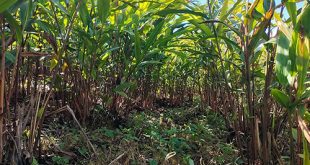In response to a question on the Paro valley from Isuna to Tsento coming under a LAP and concerns of people on the extent of land pooling and if Paro could end up like Kabesa in Thimphu or Dekiling in Bumthang with planning taking forever and no infrastructure put in place after the planning due to budget issues, the Minister for Infrastructure and Transport Chandra Bdr Gurung said the area between Isuna and Tshento falls within the Paro valley development-2017 whereby broad high level development direction has been provided to guide the development activities in the valley.
The Thimphu-Paro regions strategy provides for direction for development growth centers, provision of infrastructure and housing and protection of cultural landscape elements and employment strategy to support the vision.
The Ministry prioritised preparation of Local Area Plan for Paro in the 13 FYP and currently 4 LAPs are under preparation. These LAPs are envisaged to implement the high-level vision by translating the objectives and development strategies at the plot level.
The LAP is expected to provide clear Right of way for infrastructure, rationalized plots shapes and areas and designate clear development rights and land uses.
The land pooling and readjustment tools are used in addition to guided land development in the preparation of LAPs for Shaba, Lamgong, Bondey and Tshongdue.
Unlike in the past, the land acquisition and allotment tools have been avoided as people are greatly affected by plot displacement in the past.
As per the assessments, there is a very minimal portion of land under state ownership and provision of adequate infrastructure for the plots is a big challenge.
The land pooling and readjustment regulation, requires land contribution to provide for infrastructure. During the consultation, the land owners have supported that such contribution will only help the LAP area with adequate provision of infrastructures and other amenities.
The MoIT ensured that no pooling is done for existing infrastructures and the percentage is arrived at by assessing the land required for road widening and new infrastructures and amenities.
To maintain equitable contribution, a differential land pooling percentage has been applied depending on the precinct, intensity of infrastructure requirement and availability of existing infrastructure within the LAP boundary.
The LAP is considered as the basis for investment in infrastructure and the development of infrastructure has been guided by the approved LAP to open up the areas for planned development.
Subsequent to LAP approval, the Dzongkhag and ministry will prioritize the areas for development and accordingly allocate resources. The MoIT is prioritizing planned development and minimizing waste of resources. The benefit of the planned has to be appreciated in two way; as to promote planned development by the individuals while developing their plots with clear delineation of right of way for infrastructure and secondly, the clarity provided to the Government in prioritizing infrastructure development resource allocation,
Currently, the MoIT is exploring resources to allocate for development of infrastructures within the completed LAP.
The Dzongkhag administration is required to prioritise investment once the LAP is approved.
 The Bhutanese Leading the way.
The Bhutanese Leading the way.




